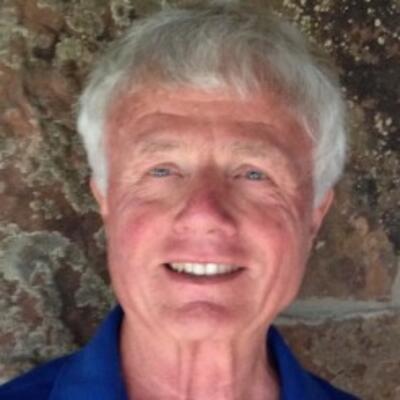Presidents Column: May 2019
More Studies Demonstrate the Feasibility, and Necessity, for 100% Renewables
For those of you who follow this column you will note that I often fly the flag for 100% Renewable Energy. So, spoiler alert, here comes another column on the topic.
The topic of 100% renewables often creates lively (and occasionally, contentious) debates within social circles and political arenas alike. What exactly does 100% Renewables really mean? It sounds so out of reach! Why wouldn’t 95% Renewables be more reasonable and attainable (since the costs of dismantling our last bit of reliance on fossil fuels could be prohibitive)? So much of our end use energy (almost 80%) is not electricity-specific, such as heating of buildings and heat used in cooking, process heat for industry, and fuels for the transport sector. Of course electricity is becoming more and more our end use energy supply of choice, and is expected to increase rapidly relative to the other sectors in the decades to come due to the shift to electric vehicles (EVs), the emergence of heat-pump technology, and improved storage devices the can save excess electricity for later use. And the use of solar energy to produce industrial process heat, or hot water where no electricity is available, or to supplement district heating systems, especially where fossil-fueled electricity generation is disappearing, continues to show growth around the world.
“But what about air transport?” one might ask. “Would 100% renewable energy targets mean the end of aviation as we know it today?” Well, to some extent yes, but it certainly does not mean the end of aviation. Already in the works are electric-powered passenger aircraft that can service airports within 1500 km of each other, and Norway, for one, plans to have these aircraft operational by 2040. And even today some commercial airlines are already experimenting with biofuels to supplement, and ultimately replace, fossil-based jet fuel.
ISES has strongly supported 100% Renewable Energy targets for a number of years, and we currently have members and partners involved in the research and analysis of what a totally renewable energy system might look like, and how we can get there. ISES was a founding member of the 100% Renewable Energy Campaign spearheaded by Anna Leidreiter of the World Future Council; this Campaign has since become a Platform led by former ISES Executive Director Rian van Staden. ISES is actively involved in the IRENA Coalition for Action “Towards 100% Renewable Energy” Committee and will be producing our second white paper on 100% Renewable Energy definitions, mapping tools, and case studies in time for release at the IRENA General Assembly in Abu Dhabi next January 2020. Rainer Hinrichs-Rahlwes is the Chair of this Committee, and I am supporting him as co-Chair.
Just this past week ISES hosted a popular webinar on the recently released study by LUT University in Finland titled “Global Energy System Based on 100% Renewable Energy”, showing clear pathways and technical feasibility to achieve a world powered entirely by renewable energy systems by the year 2050. They demonstrate that solar, along with wind, technologies will be the main components of a fully renewable system. Solar PV would grow from providing just 1% of global electricity supply today to 69% of supply in just over thirty years.
Another recent and unique study has been conducted for the U.S. state of Minnesota and published in ISES’ Solar Energy Journal by M. Perez. R. Perez. K. Rabago, and M. Putnam. The study demonstrates how overbuilding PV, so that that capacity may be as much as 1.5 times higher than would normally be expected under current load conditions, and then curtailing excess PV (beyond what has been stored) is more cost effective than building expensive large-scale storage systems to meet loads during low solar conditions, or reverting to traditional fossil energy sources for firm capacity. In this way, PV itself can offer the lowest cost firm capacity in a grid.
ISES considers definition of 100% Renewable Energy to be very broad. For sure we see how our rapidly-growing electricity system could be driven to 100% renewables in a matter of a few decades. Such a system would be run with a substantial supply of wind and solar electricity, making use of both distributed systems (to avoid future transmission access issues) and low-cost grid-scale central stations. Even if PV was to be overbuilt, as described above, storage will remain an important component of this transformed electricity system. Many types of storage systems will be included depending on the time scale for which the stored electricity supply must be released to balance the variability intrinsic with most renewables. Big data and digitalization will be key for operating this transformed energy system safely and effectively. In our vision for 100% Renewables, regardless of where the end use load is being met, all electrons that are used to meet that load are renewables-based, whether generated locally or transported over long distance. And they are renewables-based every hour of the day, every day of the year.
Beyond the electric sector, sector coupling will be key to achieve 100% renewable energy for all end use energy requirements. For example, the transport sector could by highly electrified within one to two decades, give the number of auto companies pledging to discontinue the manufacture of internal combustion engines over the next few years, and the number of regions and countries setting EV targets. Beyond EV’s we are likely to see a growing use of hydrogen-fuel cell transport systems.
The transformation to a fully renewable end use energy system is particularly urgent given the need to rapidly reduce carbon emissions to mitigate unsustainable climate change in the years to come. Many ISES members are devoting their careers and their passions to achieve what at one time seemed to be an unrealistic and unattainable target. Rather than a divisive concept, ISES is working to make 100% renewable energy a viable target for the world to achieve in the decades to come.
